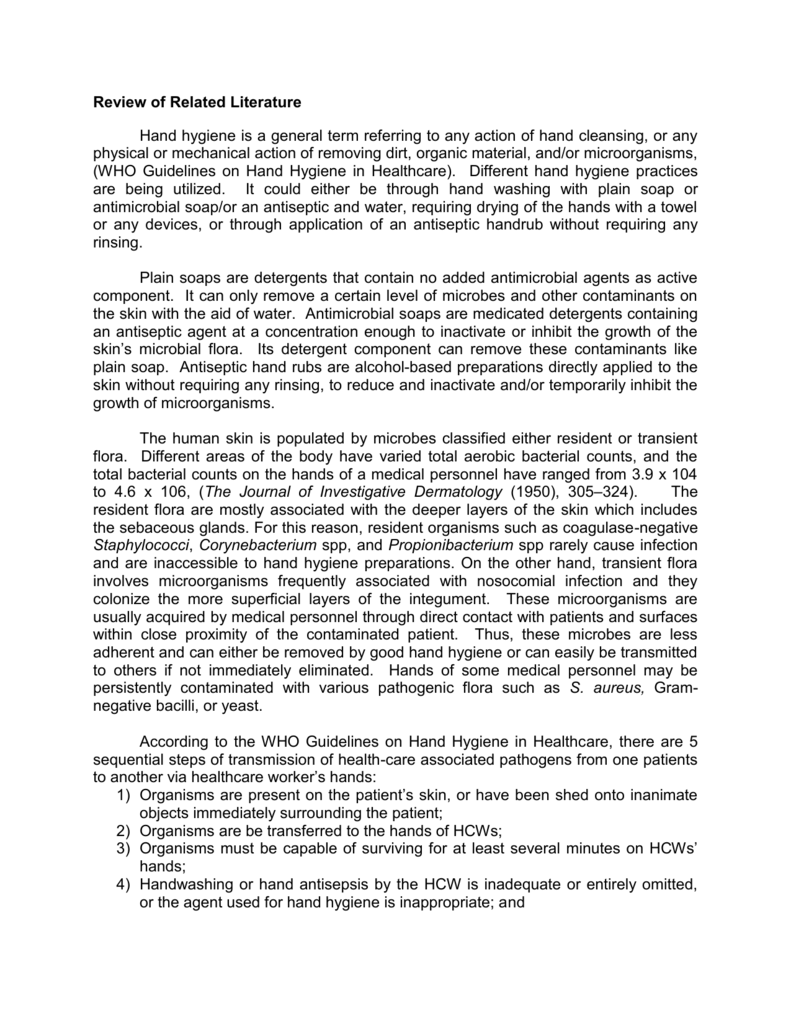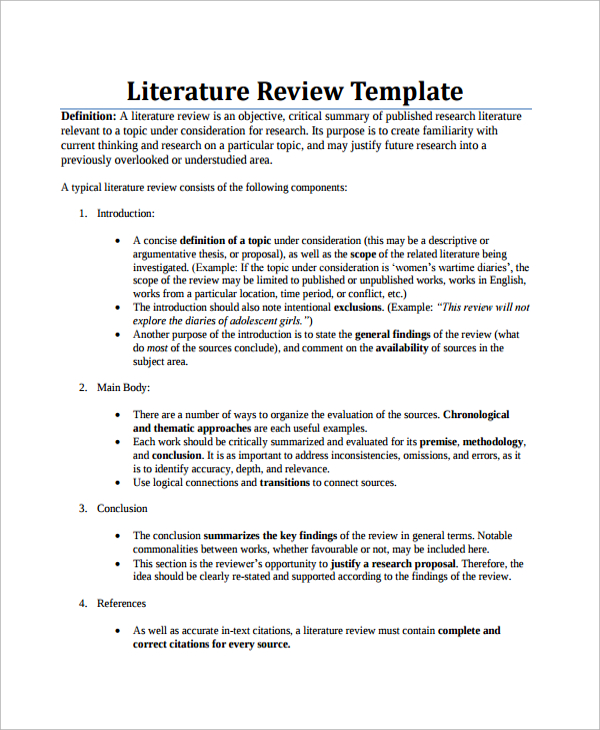
A literature review is a survey of scholarly sources that provides an overview of statement or the study’s goals or purpose. *This sample paper was adapted by the Writing Center from Key, K.L., Rich, C., DeCristofaro, C., Collins, S. (). Use of P ropofol and emergence agitation in children: A literature review. AANA Journal, 78(6). Retrieved from blogger.com Used by blogger.com Size: KB Jan 04, · 1 Answer to this question. Answer: A review of related literature (RRL) is a detailed review of existing literature related to the topic of a thesis or dissertation. In an RRL, you talk about knowledge and findings from existing literature relevant to your blogger.comted Reading Time: 2 mins 2/25/ Writing a Literature Review // Purdue Writing Lab 2/4 A literature review can be a part of a research paper or scholarly article, usually falling after the introduction and before the research methods sections. In these cases, the lit review just needs to cover
Writing a Literature Review // Purdue Writing Lab
The library offers a range of helpful services. All of our appointments are free of charge and confidential. You might be asked to write one of two broad kinds of literature reviews: a stand-alone assignment for a course, often as part of your training in the research of your field, writing review of related literature, or as a part of an introduction to or preparation for a longer work, writing review of related literature, usually a thesis or research report.
The specific purpose and length of the literature review will vary. One way to understand the differences between these two types is to read published literature reviews or the literature review chapter of theses and dissertations in your own subject area. Analyze the structure of their arguments and note the way they address the issues. You might be asked to write another type of literature review called a systematic review.
Writing review of related literature of systematic reviews use clearly defined search parameters to gather literature that will help them answer a focused research question. If you plan to write a systematic review, you can book an appointment with a librarian to develop a search strategy.
This work is licensed under a Creative Commons Attribution-NonCommercial-ShareAlike 4. It looks like you're using Internet Explorer 11 or older. This website works best with modern browsers such as the latest versions of Chrome, Firefox, Safari, and Edge.
If writing review of related literature continue with this browser, you may see unexpected results. U of G Library Guides Write a Literature Review Start Here Enter Search Words Search. Write a Literature Review. Start Here What is a literature review? What is the purpose of a literature review? What are the parts of a literature Review?
What if I have to write a systematic review? Seven Steps to Writing a Literature Review Resources for Gathering and Reading the Literature Resources for Writing and Revising Other Useful Resources Ask Us: Chat, Email, Visit or Call. More Writing Resources Check out our full list of online writing resources These guides, templates, and videos are designed to help academic writers at various stages of their writing process, including the pre-writing and revising stages.
Get Assistance The library offers a range of helpful services. Book an appointment. What is a literature review? To summarize, evaluate, writing review of related literature, and compare articles or studies that are relevant and important to your topic To highlight key findings To identify inconsistencies, gaps, and contradictions in the literature To provide an analysis of the methodologies and approaches of other researchers To provide clues as to where future research is heading or recommend areas on which to focus To ensure you do not duplicate work that has already been done.
Introduction Purpose: To explain the focus and establish the importance of the subject In general, your introduction should provide the framework, selection criteria, or parameters of your literature review provide background or history outline what kind of work has been done on the topic briefly identify any controversies within the field or any recent research that has raised questions about earlier assumptions conclude with a purpose or thesis statement In a stand-alone literature review, this statement will sum up and evaluate the current state of this field of research In a review that is an introduction or preparatory to a thesis or research report, it will suggest how the review findings will lead to the research the writer proposes to undertake.
Therefore, writing review of related literature, the literature review will discuss only that research which leads directly to your own project. Conclusion Purpose: To summarize the evidence presented and show its significance Rather than restating your thesis or purpose statement, explain what your review tells you about the current state of the field If the review is an introduction to your own research, the conclusion highlights gaps and indicates how previous research leads to your own research project and chosen methodology.
If the review is a stand-alone assignment for a course, the conclusion should suggest any practical applications of the research writing review of related literature well as the implications and possibilities for future research.
References Find out what style guide you are required to follow e. Conduct a Systematic Review. Report a problem. Suggest an edit to this guide This work is licensed under a Creative Commons Attribution-NonCommercial-ShareAlike 4.
Part 1 - How to Write the Review of Related Literature
, time: 7:38Home - How do I Write a Literature Review? - LibGuides at Eastern University

Jan 04, · 1 Answer to this question. Answer: A review of related literature (RRL) is a detailed review of existing literature related to the topic of a thesis or dissertation. In an RRL, you talk about knowledge and findings from existing literature relevant to your blogger.comted Reading Time: 2 mins A literature review is a survey of scholarly sources that provides an overview of statement or the study’s goals or purpose. *This sample paper was adapted by the Writing Center from Key, K.L., Rich, C., DeCristofaro, C., Collins, S. (). Use of P ropofol and emergence agitation in children: A literature review. AANA Journal, 78(6). Retrieved from blogger.com Used by blogger.com Size: KB Feb 22, · Writing a literature review involves finding relevant publications (such as books and journal articles), critically analyzing them, and explaining what you found. There are five key steps: Search for relevant literature; Evaluate sources; Identify themes, debates and gaps; Outline the structure; Write your literature review
No comments:
Post a Comment